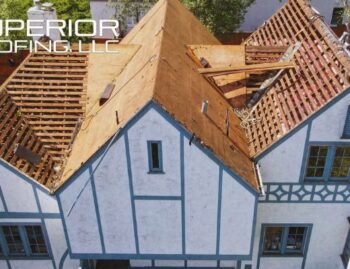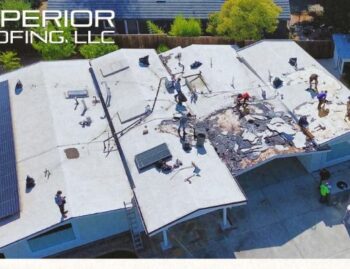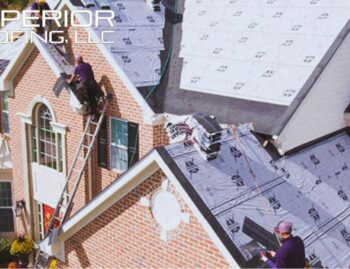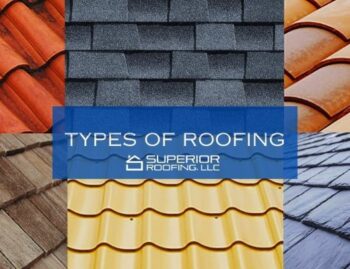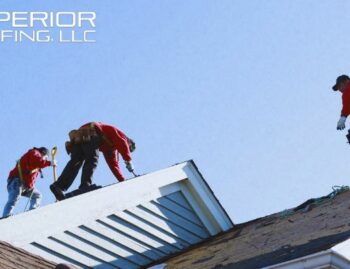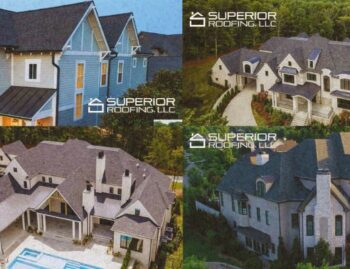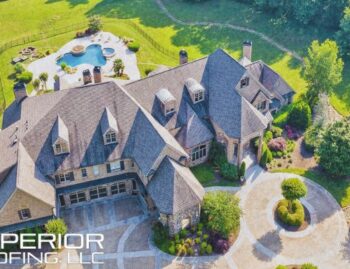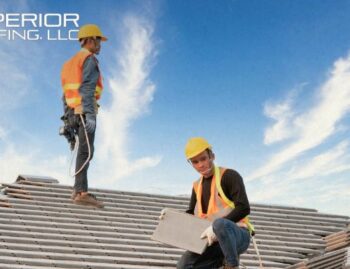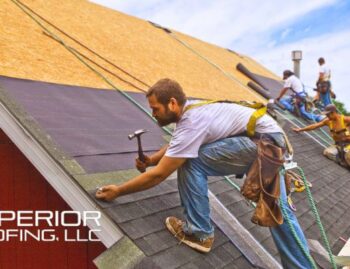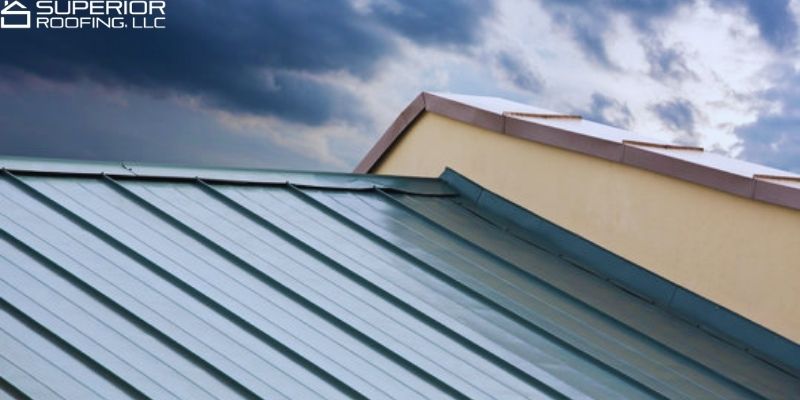
Are you a resident or business owner in Brentwood, TN, searching for the best roof type but finding it difficult to choose between EPDM roofs vs TPO roofs?
When it comes to selecting the best roofing material for your property in Brentwood, TN, Washington, it is essential to thoroughly analyze the unique environmental factors and climate conditions of the area. Understanding the environment can greatly assist you in making an informed decision between EPDM roofs vs TPO roofs, as each option has its own advantages and suitability.
Brentwood, TN, is located in Williamson County, Tennessee. It falls within the humid subtropical climate zone, characterized by hot, humid summers and mild to cool winters. The region experiences four distinct seasons, with varying temperatures and precipitation throughout the year. Therefore, selecting a roofing material that can withstand prolonged exposure to heat and humidity and withstand freezing conditions is essential to ensure the longevity and performance of your roof in Brentwood TN.
In this blog post, we will explore the key features, benefits, and considerations of EPDM roofs vs TPO roofs, helping you make an informed decision about which one is best suited for your roofing project in Brentwood TN.
EPDM Roof vs TPO Roofs: An In-Depth Analysis
When it comes to commercial roofing systems, EPDM roofs vs TPO roofs are two popular options that offer durability, energy efficiency, and cost-effectiveness. However, choosing between EPDM roofs vs TPO roofs can be a challenging decision for property owners and facility managers.
Understanding EPDM Roofs
EPDM roofs have been a popular choice in the commercial roofing industry for decades. Here are some key features and benefits of EPDM roofs:
- Material Composition: EPDM roofs are made from a synthetic rubber membrane, which is highly resistant to UV rays, ozone, and weathering, making it an excellent choice for long-term performance.
- Durability: EPDM roofs can have a lifespan of 30 to 50 years with proper maintenance. They are known for resisting punctures, tears, and abrasions, making them a reliable option for commercial buildings.
- Energy Efficiency: EPDM roofs have excellent heat and energy conservation properties. The reflective nature of EPDM helps to reduce heat absorption, resulting in lower cooling costs during hot summers.
- Easy Installation and Repair: EPDM roofs can be installed using various methods such as fully adhered, mechanically attached, or ballasted. Additionally, repairing EPDM roofs is relatively simple and cost-effective, as patching materials are readily available.
Understanding TPO Roofs
TPO roofs have gained significant popularity in recent years as an alternative to EPDM. Here are the key features and benefits of TPO roofs:
- Material Composition: TPO roofs are made from a blend of rubber, ethylene, and propylene, reinforced with a polyester or fiberglass scrim. This combination results in a highly durable and flexible membrane.
- Energy Efficiency: TPO roofs are known for their white or light-colored surface, which reflects sunlight and reduces heat absorption. This helps in maintaining a comfortable indoor temperature and reducing cooling costs.
- Installation Options: TPO roofs can be installed using various methods, including fully adhered, mechanically attached, or heat-welded. This flexibility allows for easy customization to suit different building types and conditions.
- Environmental Considerations: TPO roofs are considered environmentally friendly due to their recyclability. They can be recycled at the end of their lifespan, reducing their impact on landfills.
Comparison and Considerations:
To make an informed choice between EPDM and TPO roofs, it's essential to consider the following factors:
- Cost: EPDM roofs generally have a lower upfront cost compared to TPO roofs. However, long-term maintenance costs and energy savings should also be factored in when evaluating the overall cost-effectiveness.
- Climate Compatibility: EPDM roofs perform well in colder climates, while TPO roofs excel in warmer climates. EPDM roofs have better resistance to low temperatures and are less prone to cracking, making them suitable for regions with harsh winters. On the other hand, TPO roofs have better heat resistance and perform well in hot climates, which helps reduce cooling costs.
- Longevity: Both EPDM and TPO roofs offer good durability, but EPDM roofs have a long proven track record. EPDM roofs have been used for several decades and have a well-established reputation for longevity. TPO roofs, although relatively newer, have shown promising performance and can also have a lifespan of 20 to 30 years.
- Maintenance: EPDM roofs typically require less maintenance over their lifespan. They are resistant to algae and fungal growth, which can be common in humid areas. TPO roofs may require periodic inspections and maintenance to ensure proper performance and to address any potential issues.
Both EPDM and TPO roofs can be installed by professional roofing contractors in Brentwood TN. However, the installation process may differ. EPDM roofs are commonly installed using adhesives or fasteners, while TPO roofs are often heat-welded. The complexity of the installation can vary depending on the building's structure and other factors, so it's important to consult with a qualified roofing professional
EPDM roofs offer a proven track record, and excellent durability, and are well-suited for colder climates. TPO roofs provide energy efficiency, and installation flexibility, and are ideal for warmer temperatures. Consulting with a reputable roofing professional in Brentwood TN is crucial to assess your specific needs and make an informed decision that aligns with your budget, climate, and long-term goals. Ultimately, both EPDM and TPO roofs can provide reliable and efficient solutions for your commercial roofing needs.
EPDM vs TPO Roofing Systems: Analyzing Climate Factors in Brentwood TN
When it comes to choosing the right roofing material for your home or commercial building in Brentwood, TN, considering the local climate is crucial. Two popular options for flat or low-slope roofs are EPDM (ethylene propylene diene monomer) and TPO (thermoplastic olefin). In this article, we will delve into the climate considerations for Brentwood, TN, and evaluate the suitability of EPDM roofs and TPO roofs for this region.
Brentwood, TN Climate Overview
Brentwood, Tennessee, experiences a humid subtropical climate characterized by hot, humid summers and mild winters. The average annual temperature is around 60°F (15°C), with July being the warmest month and January the coldest. Precipitation is fairly evenly distributed throughout the year, with an average of 50 inches (1270 mm) annually.
Now, let's assess how EPDM and TPO roofs perform under these climatic conditions.
EPDM Roofs in Brentwood TN Climate
EPDM roofs have been a popular choice for flat roofs for several decades. They are made from a synthetic rubber compound and offer excellent durability, flexibility, and resistance to weathering. Here's how EPDM roofs fare in Brentwood's climate:
- Heat Resistance: EPDM roofs have good heat resistance, which is beneficial during Brentwood's hot summers. They can withstand prolonged exposure to high temperatures without significant degradation.
- UV Resistance: Ultraviolet (UV) rays from the sun can cause roofing materials to deteriorate over time. EPDM roofs have excellent UV resistance, protecting them from damage caused by prolonged sun exposure.
- Moisture Resistance: EPDM roofs have exceptional waterproofing capabilities, making them suitable for Brentwood's humid climate. They effectively prevent water infiltration, reducing the risk of leaks and moisture-related issues.
TPO Roofs in Brentwood TN Climate:
TPO roofs are a relatively newer roofing option that has gained popularity due to their energy efficiency and durability. TPO is a blend of plastic and rubber, offering several advantages for roofs in Brentwood's climate:
- Heat Reflection: TPO roofs have excellent reflective properties, which help reduce heat absorption and minimize the cooling load on buildings during hot summer days. This can lead to energy savings and improved comfort indoors.
- UV Resistance: Similar to EPDM roofs, TPO roofs have good UV resistance, protecting them from the damaging effects of the sun's rays.
- Moisture Resistance: TPO roofs are highly resistant to moisture, making them suitable for Brentwood's humid climate. Their seams are heat-welded, creating a strong, watertight barrier that prevents leaks.
Both EPDM and TPO roofs offer viable options for flat or low-slope roofs in Brentwood, TN, considering the region's climate. EPDM roofs provide durability, flexibility, and excellent resistance to heat and UV radiation. TPO roofs, on the other hand, excel in energy efficiency, heat reflection, and moisture resistance.
Regular maintenance and roof inspections are essential to prolong the lifespan of any roofing system. Whether you opt for EPDM or TPO, routine care will help identify and address any issues promptly, ensuring the longevity and performance of your roof in Brentwood's unique climate.
EPDM Roofs vs TPO Roofs: Exploring the Advantages and Disadvantages
Understanding the advantages and disadvantages of EPDM roofs vs TPO roofs can help you make an informed decision and ensure the longevity and performance of your roof.
Advantages of EPDM:
- Durability: EPDM roofing is known for its exceptional durability. It is highly resistant to weathering, ozone, and UV radiation, making it a reliable choice for long-term roof protection.
- Flexibility: EPDM is extremely flexible, allowing it to accommodate building movements and temperature fluctuations without cracking or tearing. This flexibility ensures the membrane remains intact and maintains its integrity over time.
- Easy Installation: EPDM roofing is relatively simple and quick to install, reducing labor costs and installation time. It is available in large rolls, which can be easily rolled out and secured in place.
- Cost-effective: Compared to some other roofing materials, EPDM is relatively affordable. It offers a good balance between cost and performance, making it an attractive option for budget-conscious projects.
- Low maintenance: EPDM requires minimal maintenance. It is resistant to algae and fungal growth, and occasional cleaning is usually sufficient to keep it in good condition.
Disadvantages of EPDM:
- Seam Vulnerability: EPDM roofing is typically installed using adhesives or fasteners to create seams, which can be potential weak points prone to leaks. Although modern installation techniques have improved seam strength, proper installation and regular inspections are crucial to prevent water infiltration.
- Susceptible to punctures: While EPDM is generally robust, it can be susceptible to punctures from sharp objects like branches or debris. Regular inspections and prompt repairs are necessary to address any punctures and maintain the roof's integrity.
- Limited color options: EPDM is primarily available in black. While this may not be a concern for some applications, it might limit aesthetic choices for certain architectural designs.
Advantages of TPO:
- Energy Efficiency: TPO roofing is highly reflective, meaning it can reflect sunlight and heat away from the building. This can help reduce cooling costs during hot summers and contribute to energy savings.
- Installation flexibility: TPO membranes can be installed using various methods, including mechanically fastening, fully adhering, or ballasting. This flexibility allows for different installation options based on project requirements.
- Resistance to mold and algae: TPO roofing materials often include additives that make them resistant to mold and algae growth. This can be beneficial for buildings in humid or damp environments.
- Cost-effective: TPO roofing offers good value for money, especially when considering its energy-saving properties. It is often priced competitively compared to other roofing options, making it an attractive choice for cost-conscious projects.
Disadvantages of TPO:
- Long-term durability concerns: TPO roofing is a relatively new material, and some concerns have been raised about its long-term durability. While it has improved over time, selecting a reputable manufacturer and ensuring proper installation is crucial for maximizing its lifespan.
- Susceptible to punctures and tears: TPO roofing can be vulnerable to punctures and tears from sharp objects or foot traffic during installation and maintenance. Regular inspections and cautious foot traffic practices are necessary to prevent damage.
- Limited color options: Similar to EPDM, TPO roofing is commonly available in white or light colors, which can limit the aesthetic choices for certain architectural designs.
EPDM Roofs Vs Tpo Roofs: Which Is Better For Roof Replacement In Brentwood TN Residential Buildings?
When it comes to roof replacement in residential buildings in Brentwood TN, both EPDM roofs vs TPO roofs have their own set of advantages. EPDM roofs are known for their durability, flexibility, and resistance to weather elements, making them a reliable choice for long-term protection. On the other hand, TPO roofs offer excellent energy efficiency, low maintenance requirements, and are often more affordable.
Ultimately, the best choice between EPDM and TPO roofs depends on your specific needs, preferences, and budget. It is recommended to consult with a professional roofing contractor in Brentwood TN who can assess your building's requirements and provide expert advice tailored to your unique situation.
No matter which option you choose, investing in a high-quality roof replacement is crucial for the long-term integrity and protection of your residential building in Brentwood. With proper installation and regular maintenance, both EPDM and TPO roofs can provide years of reliable service, giving you peace of mind and ensuring a safe and comfortable living environment for you and your family.
Common Challenges in EPDM Roof Repair Compared to TPO Roof Repair
Roofing repairs can be a daunting task, and understanding the unique obstacles that arise with different roofing materials is crucial. So, whether you're a homeowner, a roofing professional, or simply interested in the topic, let's delve into the world of EPDM and TPO roofs and their distinct challenges.
Understanding EPDM Roof Repair Challenges
EPDM roofs are known for their durability and affordability. However, like any roofing material, they have their specific challenges during repairs. Here are a few key points to keep in mind:
a) Age and Weathering: EPDM roofs may become brittle and susceptible to cracks, especially with prolonged exposure to harsh weather conditions common in Brentwood, TN. Repairing these cracks requires careful inspection and a meticulous approach to prevent further damage.
b) Seam Integrity: One of the primary challenges in EPDM roof repair is maintaining the integrity of the seams. Seam failure can lead to leaks and compromised insulation. Proper adhesion techniques, meticulous cleaning, and precise application of seam adhesive are crucial for long-lasting repairs.
c) Patching and Ponding: Identifying and repairing punctures or tears in EPDM roofs can be challenging. Additionally, standing water or ponding on the surface can degrade the roofing material over time. Thoroughly assessing the extent of damage and utilizing appropriate patching techniques are essential for effective repairs.
Tackling TPO Roof Repair Challenges
TPO roofing has gained popularity for its energy efficiency and durability. However, it also comes with its unique set of challenges during repairs. Here are a few noteworthy points:
a) Heat-Welding Techniques: TPO roofs are typically heat-welded during installation, and repairs require similar techniques. This calls for skilled professionals with expertise in using hot air guns or robotic welding equipment. Proper temperature control and consistency are vital to avoid damaging the material.
b) Membrane Punctures: TPO roofs can be susceptible to punctures from sharp objects or foot traffic during repairs. Identifying and patching these punctures promptly is crucial to maintain the roof's integrity and prevent water infiltration.
c) Seam Integrity: Similar to EPDM, ensuring seam integrity is critical in TPO roof repair. Adequate cleaning, proper application of seam adhesive, and ensuring airtight bonding are essential to prevent future issues.
Seeking Professional Expertise:
Consulting with Roofing Professionals in Brentwood TN
When it comes to choosing between EPDM roofs and TPO roofs, it is always beneficial to consult with roofing professionals in Brentwood TN. At Superior Roofing LLC, our team of experts possess the knowledge and experience necessary to guide you toward the best roofing solution in Brentwood TN for your specific needs.
Whether you require roof repairs, maintenance, or a complete roof replacement, Superior Roofing LLC is well-equipped to provide you with exceptional service.
FAQs About EPDM Roofs vs TPO Roofs
- What is EPDM roofing?
EPDM roofing is a type of single-ply synthetic rubber membrane commonly used in commercial and residential roofing applications. It is highly durable, flexible, and resistant to UV rays and weathering.
- What is TPO roofing?
TPO roofing is another type of single-ply membrane used in roofing systems. It is made of a blend of plastic and rubber compounds. TPO roofs are known for their energy efficiency, durability, and resistance to UV rays.
- How do EPDM and TPO roofs compare in terms of installation?
EPDM roofs are typically installed using adhesive, mechanical fasteners, or ballast, such as gravel. TPO roofs can be installed using various methods, including fully adhered, mechanically attached, or ballasted. Both EPDM and TPO roofs require professional installation.
- Which roofing material is more durable?
Both EPDM and TPO roofs are considered durable, but EPDM is generally known for its exceptional longevity. EPDM roofs can last 30 years or more with proper maintenance. TPO roofs have a slightly shorter lifespan, typically ranging from 20 to 30 years.
- Are EPDM and TPO roofs resistant to weathering?
Yes, both EPDM and TPO roofs offer good resistance to weathering. EPDM roofs are highly resistant to UV rays, ozone, and extreme weather conditions. TPO roofs also have good UV resistance and can withstand hail, wind, and other weather elements.
- Which roofing material is more energy-efficient?
TPO roofs are known for their energy efficiency. They have reflective properties that help reduce heat absorption, keeping the building cooler and potentially lowering cooling costs. EPDM roofs, while not as reflective, can still provide some energy efficiency benefits.
- Are EPDM and TPO roofs prone to leaks?
When properly installed, both EPDM and TPO roofs can provide excellent waterproofing. However, improper installation or damage to the roofing membrane can lead to roof leaks in either system. Regular inspections and maintenance are essential to prevent leaks and address any issues promptly.
- Which roofing material is more cost-effective?
EPDM roofs tend to be more cost-effective in terms of upfront installation costs compared to TPO roofs. However, the overall cost may vary depending on factors such as roof size, complexity, location, and contractor pricing. It's advisable to obtain multiple quotes for an accurate cost comparison.
- Can EPDM and TPO roofs be repaired?
Both EPDM and TPO roofs can be repaired if they sustain damage or develop leaks. Repairs usually involve patching the affected area with compatible materials and adhesives. It's important to hire a professional roofing contractor experienced in working with the specific roofing material.
- Which roofing material is easier to maintain?
Both EPDM and TPO roofs require regular maintenance to ensure their longevity. EPDM roofs may need occasional cleaning and inspections for damage or signs of wear. TPO roofs require similar maintenance, including cleaning and inspections. Overall, the maintenance requirements are fairly comparable for both materials.
Which is the Best Roof for Brentwood TN?
Throughout our discussion, we explored the key aspects of EPDM roofs vs TPO roofs including their performance in different climates and the advantages and disadvantages of each system.
In terms of climate factors, EPDM roofs are known for their exceptional durability and resistance to extreme temperatures and UV radiation, making them suitable for Brentwood's diverse weather conditions. TPO roofs, on the other hand, provide excellent reflectivity, which helps in maintaining a cooler indoor environment during hot summers. While EPDM roofs offer long-term reliability and are relatively cost-effective, TPO roofs excel in terms of energy efficiency and ease of installation. Both options have their unique strengths and weaknesses, and the final decision should be based on individual needs, budget, and preferences.
For residential roof replacements, it is crucial to consider factors such as longevity, maintenance requirements, and energy efficiency. Consulting with roofing professionals and considering the specific requirements of your building will help determine whether EPDM or TPO roofs are better suited for your residential needs in Brentwood TN.
Ultimately, making an informed decision by evaluating these factors will lead to selecting the best roof that ensures protection, energy efficiency, and long-term value for your home in Brentwood TN.


